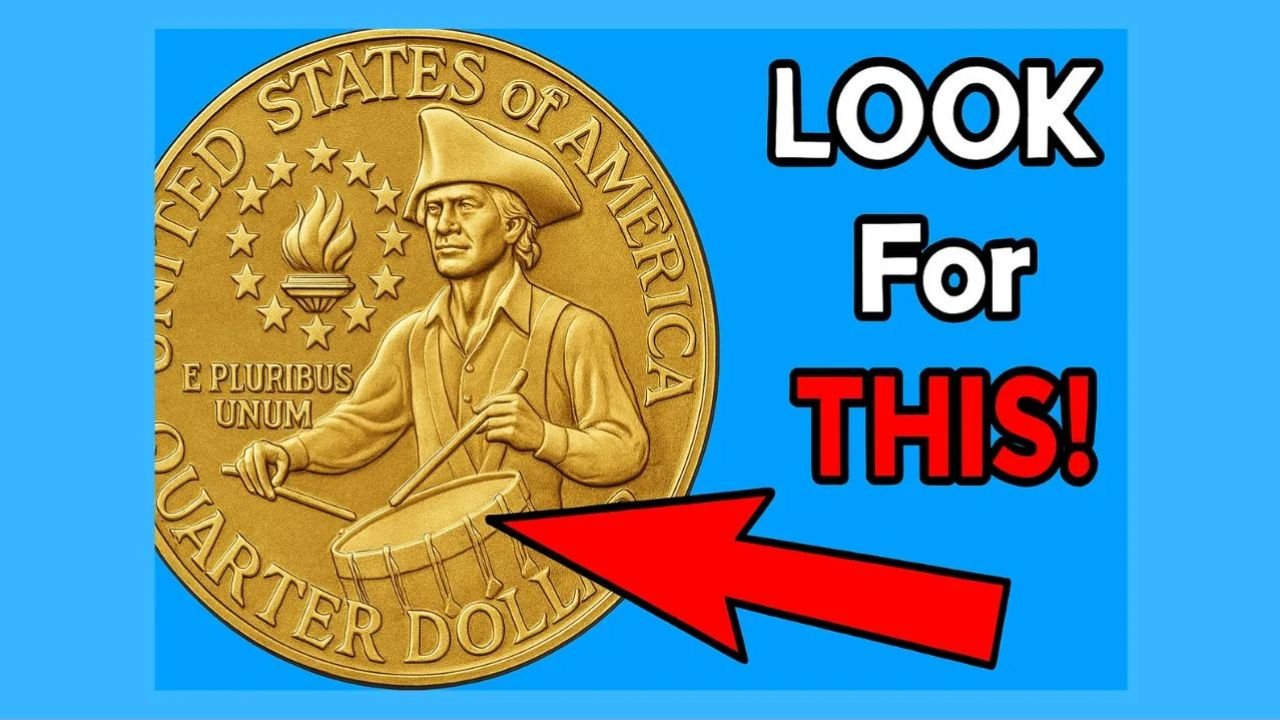There’s a quiet thrill in sifting through loose change, a small daily ritual that connects us to history. For a generation of Americans, one coin in particular carries the weight of a national celebration: the 1976 Bicentennial Quarter. While sensational online tales speak of mythical billion-dollar valuations, the real story of this coin is far more enriching. It’s a tale of national pride, artistic tribute, and the enduring hope that a piece of history might still be hiding in a pocket or a purse.
A Nation’s 200th Birthday, Captured in Metal
In 1976, the United States threw a birthday party for itself, and every citizen was invited to participate simply by using their pocket change. To mark the 200th anniversary of American independence, the U.S. Mint released special commemorative coins, with the quarter undergoing its most significant transformation. The familiar eagle on the back was replaced with a poignant new image: a colonial drummer boy, a torch of victory beside him, and a ring of thirteen stars honoring the original colonies. The front featured a determined George Washington, now framed by the dual dates 1776-1976. This wasn’t a coin meant only for collectors; it was designed for everyday use, a deliberate and democratic effort to make history tangible for millions.
Separating Modern Myth from Numismatic Reality
The idea of a common Bicentennial Quarter being worth billions is a classic piece of internet folklore, a story that captivates because it speaks to our shared dream of a life-changing find. The reality, while less sensational, is no less fascinating to those who appreciate the hobby. The overwhelming majority of these quarters are worth exactly twenty-five cents. Their true value lies in their story, not their price tag. However, as with any mass production, rare exceptions were made. Special 40% silver versions struck for collectors, and coins with dramatic minting errors—such as a double-struck design or an off-center impression—can hold significant value, sometimes reaching into the hundreds or even thousands of dollars for the rarest specimens. The key takeaway is that value is tied to specific, uncommon attributes, not the coin’s general commemorative nature.
The Enduring Appeal Beyond Price Guides
So, why does this particular coin continue to capture our imagination decades later? Its power isn’t financial; it’s emotional and historical. For many, it’s a direct link to a specific moment in time—the patriotic fervor of the Bicentennial year. The unique drummer boy design is instantly recognizable, a work of art that stands apart in the history of U.S. coinage. For collectors, the joy is in the hunt. Checking your change or searching through a roll of coins becomes a small act of historical detective work, a search not just for a rare silver variant, but for a connection to a shared past. It represents the idea that history isn’t always locked away in museums; sometimes, it’s right there in the palm of your hand.
Your Own Brush with History
The most compelling part of the Bicentennial Quarter’s story is that it is still unfolding. It is entirely possible to receive one today—as change from a grocery store, in a handful of coins from a parking meter, or at the bottom of an old drawer. While the chances of finding one of the rare, high-value errors are slim, the likelihood of finding a standard Bicentennial Quarter is quite high. This enduring presence is what keeps the connection to 1976 alive.
Ultimately, the real treasure of the Bicentennial Quarter is not a potential fortune, but the story it tells. It is a miniature, circulating monument to a nation’s founding ideals and its 200-year journey. The next time you hear the jingle of coins, take a moment to look. You may not find a billion-dollar windfall, but you might just find a small, metallic piece of American memory—and that is a find worth celebrating.

